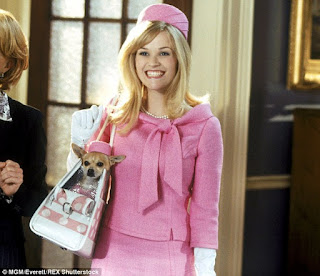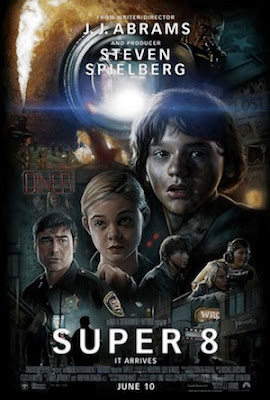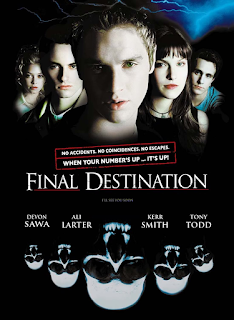Legally Blonde
Introduction
The blogpost this week for us is to find out the feminist
film theory elements that could be found in the
movie Legally Blonde. By that, the goal of this post for me is to study about
this movie, watch it, and get to know about what theory is used in it which
showed the semantic and syntactic approach to genres for the film. Along my
study of this film, by accomplishing my goal, I would also have an attempt to
determine the feminist film theory elements that
would be found in film by stating it out in the analysis section of my post.
Theory Discussion
Talking about genre, it come with semantic and syntactic, in
which the semantic is basically things or parts that are expected in the genre
of a film, while in which the syntactic is the ideology of the certain genre.
To separate semantic and syntactic views accurately, we can easily
differentiate between the generic definition of both. Basically, semantics
contain areas such as the setting of location, character, also the props or
materials that need to be use in the film. These are the things what usually
give the film their generic genre traits, for example the genre’s common
traits, scenes’ attitudes, ways of shooting, specific locations, commonly used
sets and so on. According to Rick Altman (1984), he stated that, while the
semantic approach has little explanatory power, it is applicable to a larger
number of films. Conversely, the syntactic approach surrenders broad
applicability in return for the ability to isolate a genre's specific
meaning-bearing structures. For instance, semantic approach stresses the
building blocks of one genre, while when syntactic approach might focus more on
arranging the structures.
As for the evolutionary part that we have discussed in
class, I guess every genre also need to know where and how each genre should be
at and stay, but production teams must have extremely creative ideas even if
they are making the same genre kind of movies again and again to attract and
lock the audiences. No matter how time changes, the genre will only increase
but not decrease and the ideas must be keep being innovative and unique unless
films these days will have no improvement at all. There are always universal
traits for each genre to be passed down generations by generations because they
are to keep the origin and meaning of each genre.
Synopsis
This film is about the story of a blonde girl, given the
name Elle Woods, a president of Tropical girl sorority, tries to win her
ex-boyfriend back by going to law school and gain him back while studying. The
story goes around when she started her new life at Harvard Law school. As the
incidents revolve around, she wins the respect of everyone and overcomes the
“dumb blonde” stereotype to ultimately declare herself proudly Legally Blonde.
Analysis
There are few themes in feminist theory such as
discrimination, stereotyping, objectification, oppression, and patriarchy. In
the movie Legally Blonde, I could make it into few parts to analyse the scenes
based on the themes given in feminist theory.
For objectification, this theme could be explained by the
part of the film where Elle wants her boyfriend back as she thinks his
boyfriend as an object. Also, the scenes where the panel of judges is watching
the introductory video or recommendation video of Elle Woods. Elle is being
portrayed as a sexual object in front of the panel as she dressed
inappropriately in the video and the panel does not stop watching the video
immediately.
For discrimination, it was shown at the part where Elle is
being molested by Callahan but then she got discriminated by Vivien right at
the moment after that incident. It hurts Elle very much as the way of Vivien
discriminate her is far away from the truth that has happened. The patriarchy
part is shown at almost the end where Callahan kept holding his position as the
lawyer of the victim because he doubted the gender that is replacing his
position.
For stereotype theme, the line which Elle Woods says, “gay
men know designers while straight men don’t” is exactly stereotyping the gay
men. There is no concrete proof that all gay men should get to know the
designers. Just because the gay man in film recognise a shoe designer, does not
bring the meaning that every gay man in the world should be like that too.
Besides, as how the main topic of this film comes from, “Legally Blonde”, which
is to deny the fact that “blondes are stupid and they are committers”, the
stereotype of blonde is stupid is being used in the whole film.
Conclusion
This film has listed into one of the movies that I really
like. I love how the storyline goes and how the events happened that make her
become a girl who finally care about what’s inner is more important than the
outer look. It is also very exciting for me to watch because Elle successfully
overcomes the tag “dumb blonde” for all the blondes.






Comments
Post a Comment